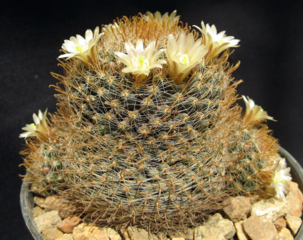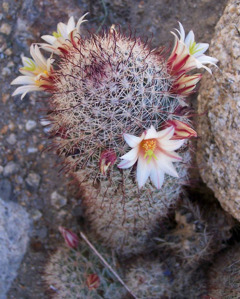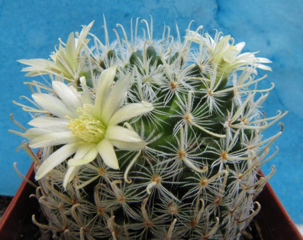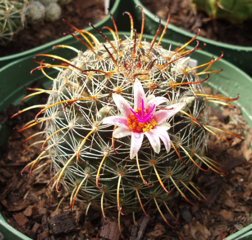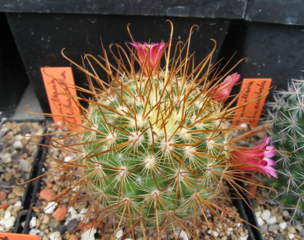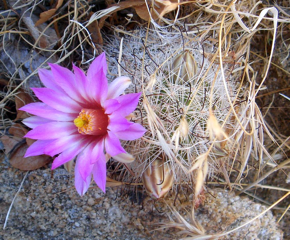Submitted by: Jim Tanner
A Mammillaria is often one of the first cacti that a beginning grower buys. A credit to the toughness of these plants, is that many survive for years in spite of all sorts of abuse and neglect. Many inexpensive purchases at local chain stores have been grown on to be become show plants, the quality of the plant maturing with the skill and experience of the grower. In part because they are so generous with flowers and seeds, and the seeds germinate so readily, many rare species end up in unlikely places like home centers, supermarkets, and hardware stores. It’s worth keeping an eye out for unusual specimens, but beware of names found on discount store plants.
Mammillaria is one of the larger genera in the Cactus family, and one of the most variable, with some members remaining as solitary columns for their entire lives, some remaining as fingernail size solitary globulars, some straight spined, and some clumped and heavily spined with hooks. Although the hooked spined species give the genus one of its common names, “fishhook cactus”, they are not as often grown as the straight spined species. They are not as friendly either, with the hooks catching on skin and clothes, and pieces of stem coming off, when least expected.
The secrets to good growth are a continued supply of fertilizer during the growing season, strong light, and maintenance of a clean and insect free growing environment.
Although most Mammillaria are native to Mexico, some species in the genus can be found from Columbia to Kansas and California. The species from the tropics and warmer areas are rarely tolerant of cold and damp. Those from the drier desert regions are also intolerant of continued damp, but can take considerable cold.
Propagation of Hooked Spined Mammillaria is easy. Cuttings can be taken at any time during the growing season (April to early November), left to dry for a few days and replanted in a clean potting mix. Mammillaria are one of the easiest species to grow from seed. The seeds are simply placed on top of a damp potting mix, covered with a light coating of gravel, placed in a plastic bag in bright light, but out of direct sun and allowed to germinate. Germination usually occurs in a week or 10 days. The seedlings can stay in the plastic bag for several weeks until they get large enough to survive unprotected, and should then be removed to a still shaded, but brighter and drier environment. Most will survive, and grow quickly.
Tom Glavich
